Looking for a few seed crops that you can still plant in your garden or raised beds this summer to get a great fall harvest?
If you think spring and early summer are the only times you can plant seeds in your garden – think again! As it turns out, there are actually a number of seed crops that can go in the ground in mid summer – and all of them can easily help you to extend your growing season to enjoy fresh vegetables far into late fall and in some cases – even beyond!
The secret to replanting or simply planting a garden in the middle of summer is to select vegetables that have a short seed to fruit time. And the good news? There are quite a few that can easily produce produce fast. In fact, some in as little as a month or less!
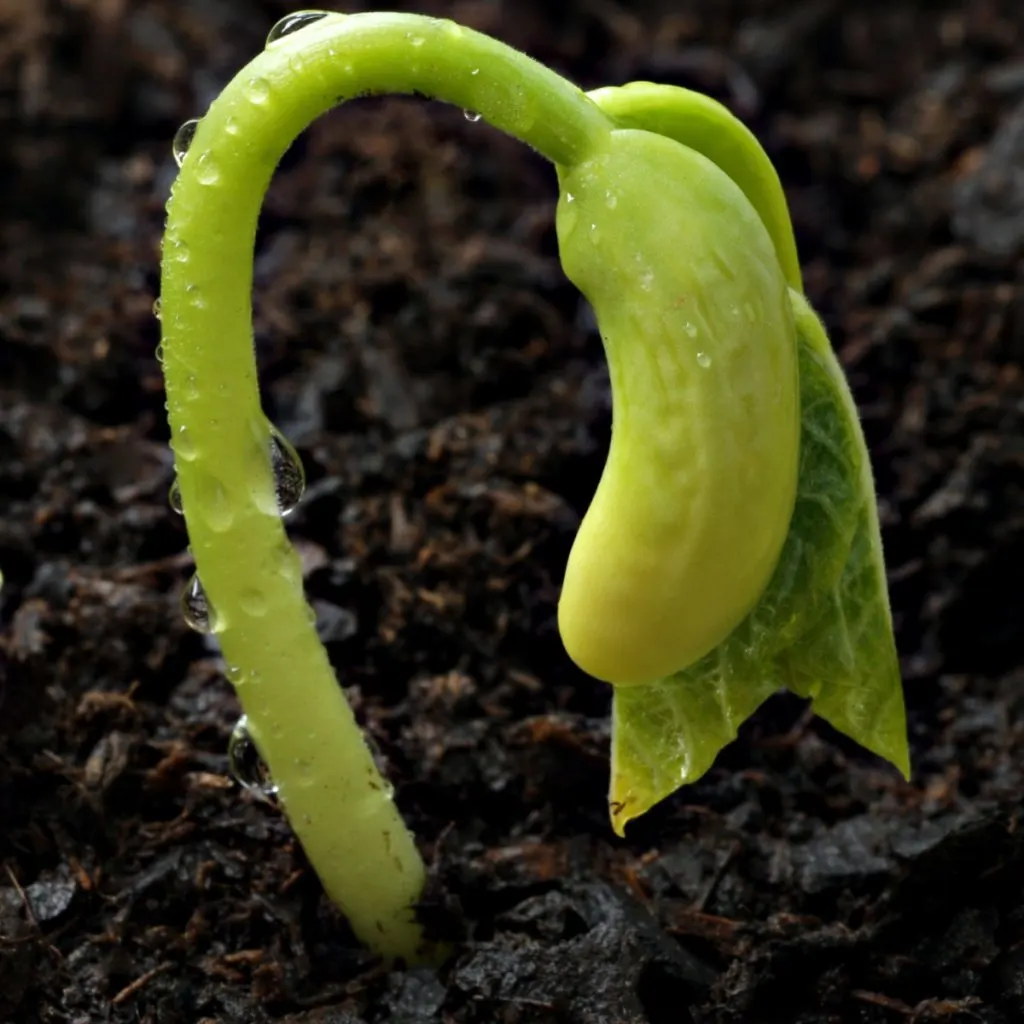
With summer planting, many of the perils of early spring are long gone for seeds. The soil is warm and allows for fast germination. And the warm overnight temperatures have zero worry of frost and let plants grow fast. Best of all, it’s comfortable to work outside too!
With a big fall harvest in mind – here are five of the best of the best seed crops that are excellent for planting smack dab in the middle of summer!
5 Great Seed Crops You Can Plant In The Middle Of Summer
#1 Lettuce
Salad greens are one of the easiest crops to grow from seed. However, they can quickly go bitter once the warmer weather hits. But by planting in the late summer or early fall, you can enjoy fresh greens for several more months.
With varieties that range from full head to loose leaf varieties and many different flavor profiles, there are options for everyone. In addition, many lettuce varieties take a very minimal amount of space and grow quickly. For a continual harvest, sow a few rows of seeds every couple of weeks starting in late summer.
Planting and Harvesting
Plant salad green seeds about an eighth of an inch deep. Lettuce seeds actually need sunlight in order to germinate so you don’t want to bury them deeply. Water carefully to help avoid disturbing the tiny seeds and keep the top layer of soil moist.
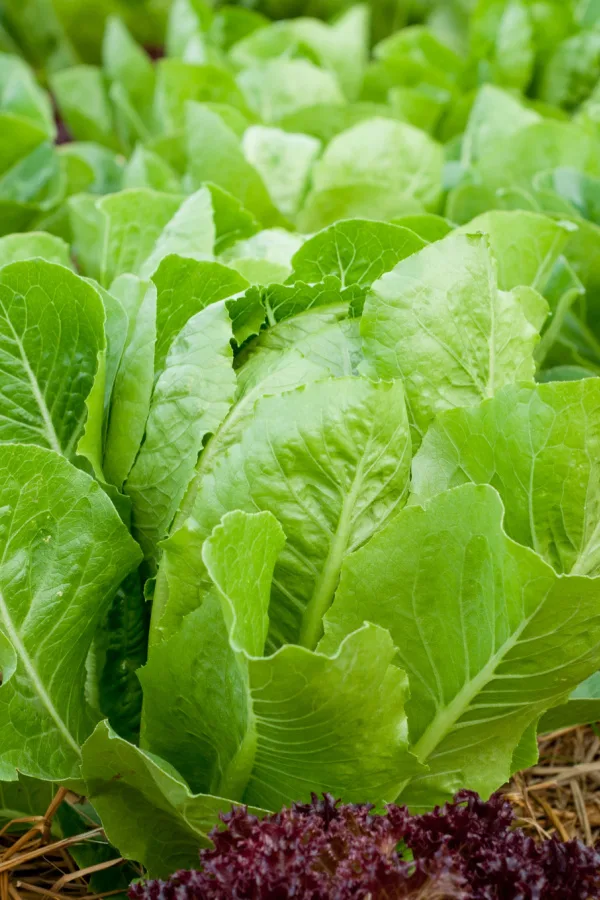
Germination will take about a week. Once plants are a few inches tall, they will need to be thinned to allow the mature plants to grow to size. The spacing you use will vary greatly depending on the lettuce variety you are growing.
For example, iceberg lettuce needs around 16 inches between plants to come to full heads while loose leaf lettuces only need an inch or two. Affiliate Seed Link: Lettuce Seeds – 4 Pack Lettuce Variety Seeds
Harvesting will also depend on the type of lettuce you are growing. Loose leaf lettuces can be harvested after they are a few inches tall. They will continually produce additional leaves as time goes along. Head lettuces can take up to 45 to 55 days to harvest.
#2 Sugar Snap Peas – 5 Seed Crops You Can Plant In The Middle Of Summer
Unlike shelling peas, sugar snap peas can be completely consumed – pod and all. They are excellent for eating raw or for sauteing in dishes like stir-fries. As their name entails, they are crisp, sweet, and add a delicious flavor to many dishes.
In addition to being quick to grow from seed, peas help to actually improve your garden soil. Since they are a member of the legume family, their roots help to add nitrogen back to the soil where needed.
They are perfect for growing in locations where heavy feeders grew during the summer months. You can also use peas as a late fall cover crop to help your garden. See our article: How To Plant A Garden Cover Crop With Field Peas This Fall
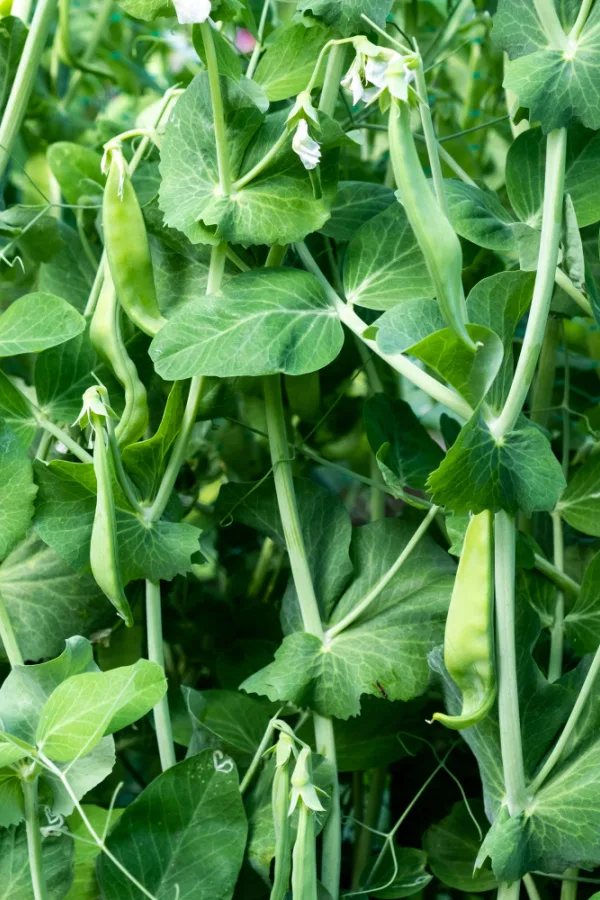
Most sugar snap pea varieties feature small tendrils that love to climb. Be sure to add some sort of trellis feature near the planting location that can support the peas and help them to grow tall and stay healthy.
Planting and Harvesting
Plant seeds at least 8 to 10 weeks before your first expected frost. Place seeds around one inch deep, spacing them an inch apart. Cover with soil and water well. The seeds should germinate in around 7 days with warmer soil. Affiliate Seed Link: Sow Right Seeds – Sugar Snap Pea Seeds Non-GMO
Once seedlings are a few inches tall, thin to one plant every 2 to 3 inches. The pods should be ready for harvesting around 6 to 8 weeks after sowing seeds. The more often that you harvest your sugar snap peas, the more the plants will produce.
#3 Green Beans – 5 Seed Crops You Can Plant In The Middle Of Summer
Most spring planted bean crops start to finish in mid summer. This makes it great to pull out your bean plants and replant for a great fall harvest. Beans are a great choice for summer replanting because they require little additional nutrients from the soil. In fact, like sugar snap peas, they improve it!
Beans grow fast, especially with the warm soil in the summer. As long as you plant in late July or early August, most can produce for a full month before the first frost arrives in most climates.
Planting & Harvesting
Sow beans one inch deep and about 54 to 6 inches apart. Water well and continue to water for the first few weeks to allow the roots to set. Beans such as the Bush Lake variety can be ready for picking in around 55 to 60 days. Affiliate Seed Link: Bush Lake Green Beans

#4 Radishes – 5 Seed Crops You Can Plant In The Middle Of Summer
Radishes are one of the quickest vegetables to grow in the garden. In fact, some varieties can go from seed to harvest in as quick as 30 days! From mild and sweet to hot and spicy flavors, there’s a radish variety for your taste buds.
Another bonus of radishes is that they take up minimal space. They are great for container growing or scattered among other vegetables in raised beds and traditional gardens. Affiliate Seed Link: Cherry Belle Radish Seeds – Non-GMO Heirloom
Planting and Harvesting
Since they are root vegetables, you need to have loose soil in order for radishes to grow and expand. Amend the soil with compost and sand for really heavy soils. Plant radish seeds about half an inch deep. Keep seeds about an inch apart and in rows about 4 to 6 inches apart.
Radishes can germinate in as little as 3 to 4 days. Once they are a few inches tall, thin seeds so you have one plant every 2 to 3 inches. Harvest when the stems at the ground level are about an inch wide.
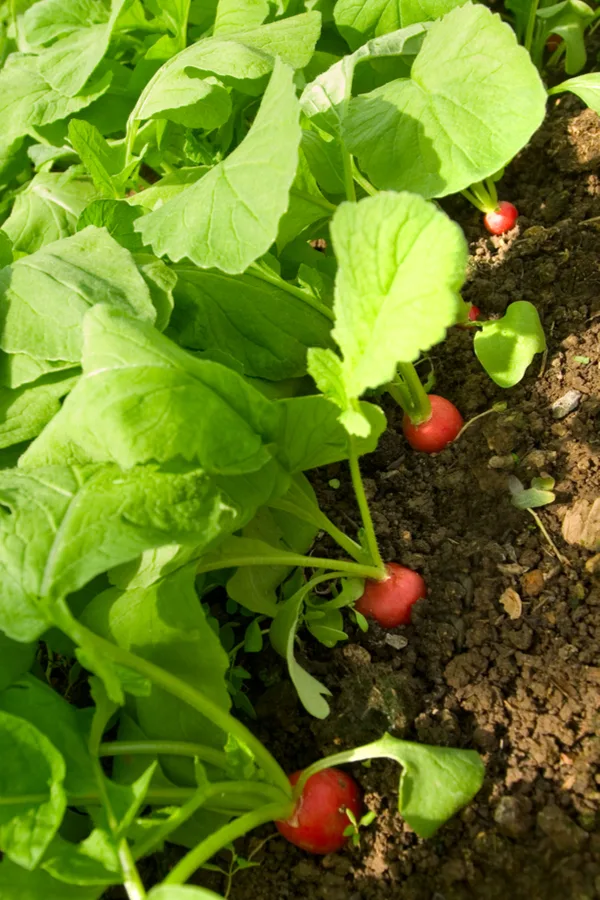
#5 Kale – 5 Seed Crops You Can Plant In The Middle Of Summer
Kale is quite the super food! Not only is it full of antioxidants and vitamins, but it looks stunning as it grows with its textured leaves and purple and green variations. There are also many different flavor profiles of kale. From warm and peppery to salad-like, there’s a variety for every taste and preference.
Kale takes a bit longer to grow from seed to consumption than lettuce, but it can still be harvested in 45 to 60 days. Another bonus is that, unlike some vegetables, kale can withstand a bit of frost and cold temperatures. In fact, it can handle temperatures as low as 10º Fahrenheit before going bad.
Planting and Harvesting
Each kale plant can grow to be around one to two feet tall as well as wide. Be sure to space them accordingly when deciding where to plant seeds. Affiliate Seed Link: Organic Kale Seeds (Vates Blue Scotch Curled)
Place seeds about one-half inch deep and a few inches apart. Cover with soil and water well. Rows should be spaced around 18 to 30 inches apart, but this can vary depending on the exact kale variety you are growing.
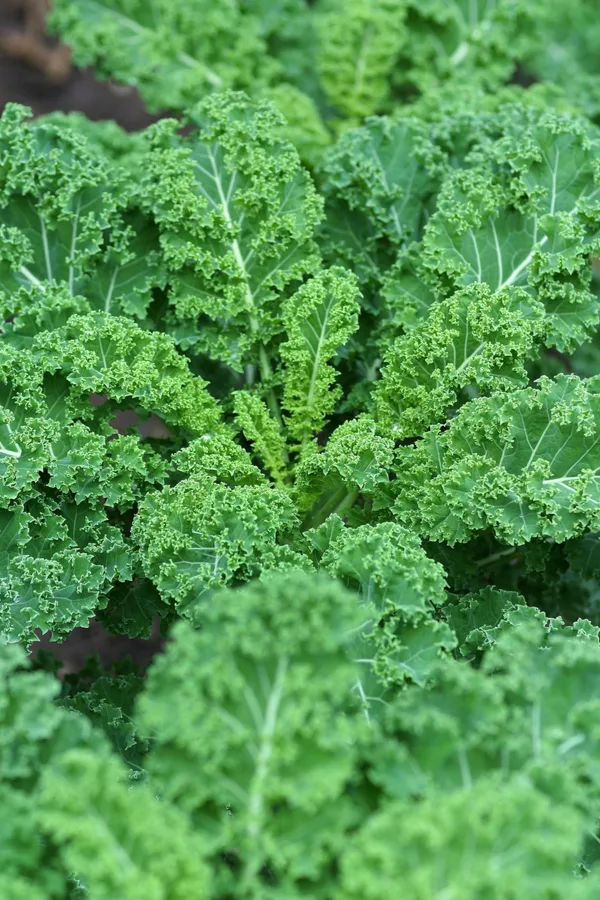
Keep soil moist until germination, which should take around 5 to 8 days. After plants are a few inches in height, thin plants as needed.
You can harvest young, tender leaves before the plant has reached full size. For mature harvesting, wait until the leaves are around the size of your hand. Be sure to take the outside leaves first, allowing the inner leaves to grow.
Here’s to replanting your garden this summer with a few seed crops – and to enjoying a wondrous fall harvest later this season!
Simple Garden Life
Follow Our Facebook Page For Even More Great Tips! Simple Garden Life Facebook Page
Simple Garden Life is a website dedicated to keeping gardening fun, simple and enjoyable! We publish two new articles each week along with a new garden podcast episode every two weeks. This article may contain affiliate links.
